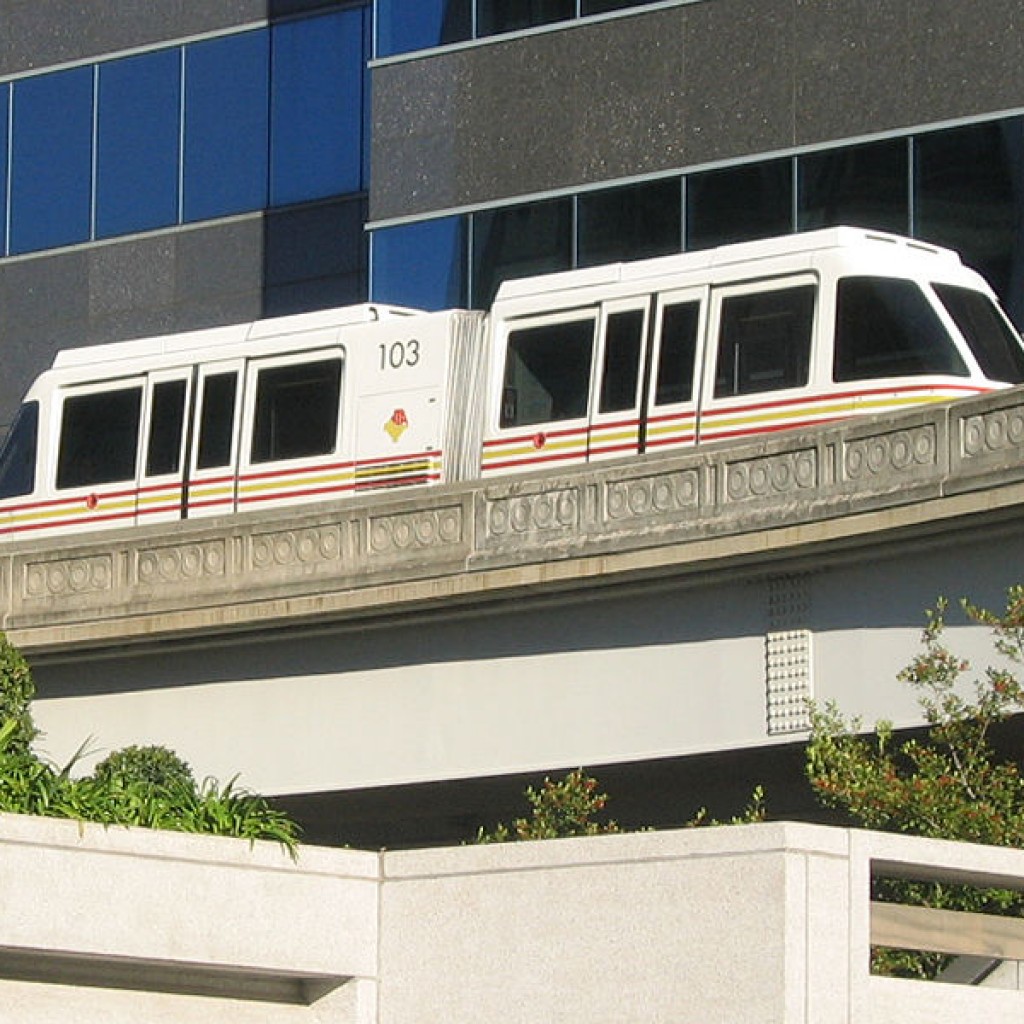
The Jacksonville Skyway. If you ever saw the classic Simpsons episode about the Springfield Monorail, you’ll know how most longtime locals feel about the almost 30-year old mass transit conveyance.
The complaints are myriad. It isn’t especially accessible for the vast majority of residents. Some say it goes from “nowhere to nowhere.” Its aesthetics? Like something out of the USSR, around the time of Konstantin Chernenko. However, especially during the One Spark festivals in recent years, the Skyway served a valuable function: getting people from the Southbank across the river to downtown
Well, the price is right. The Skyway is free to ride. And it has no shortage of supportive press advocating its case.
A recent example of such: an article in the Jacksonville Business Journal, which stated that getting the Skyway ready for its “next phase of life” would cost $64 million and $85 million dollars.
Not bad for a conveyance that brings in all of $0.00 to city coffers every year.
The JBJ reports, in its characteristically deadpan way, that the JTA commissioned a study that cost a mere $349,000 (which is a bargain, really, as they used a Groupon to bring it down from $700,000), in which a firm came up with “options,” such as tearing down the Skyway and “buying new cars.”
Right now, the system has all of six two-car trains. Estimated ridership is about 5,000 people a day.
Not bad for a system that cost $182 million to build.
The prevailing bias of the piece is to keep the Skyway. JTA asserts that, were it to be torn down, JTA would be on the hook for paying back a $25 million Federal Transit Administration grant.
Of course, to essentially custom fabricate its cars, which might as well be made by DeLorean because both are out of production at this point, the estimated price tag of car overhaul is $70 million.
That comes out to a mere $14,o00 per rider. A cynic would say, “Just buy them Kias and be done with it.”
But this is Jacksonville, where cynicism simply doesn’t prevail.
The JBJ article manages several neat rhetorical tricks. It blames previous JTA administration for not successfully integrating the Skyway into its system, while saying that the Skyway essentially is the cornerstone for a thriving downtown.
“If you want an exciting place that’s walkable, fixed transit has to play a role. If you don’t really care and you’re fine with Downtown looking like Baymeadows Boulevard or the Town Center, then put in buses and parking lots and that’s what you get,” says an urban planner quoted therein.
Well, for starters, Baymeadows is a road.
Another critical error in the piece, from a JTA rep himself: the assertion that in the early 1970s, when the Skyway was being conceptualized, there was no Regency Mall, and all shopping was downtown. While it’s true that Downtown still had its department stores, Regency actually opened in 1967.
In fact, by the time the Skyway was built in 1987, Regency was on its downward slope. Just a few years later, it would be superseded by the Avenues Mall farther south.
Beyond all that, though, some Jacksonville City Council members have questions about JTA’s path forward vis-á-vis the Skyway.
Some of them might have been addressed in the Transportation, Energy, and Utilities Committee meeting this week; however, JTA got confused about the dates and so its Council presentation will be pushed back to October.
For Councilman Tommy Hazouri, who was elected mayor in 1987, there are issues worth mentioning.
“What continues to concern me,” Hazouri said on Tuesday, “is the amount of money up front” that would be required.
However, “unlike the train, they’re moving forward.”
Hazouri, regarding the $349,000 study, noted the obviousness of the conclusions.
“Anybody could have suggested” the four options presented.
$4 million is budgeted by the city in FY 16 for escalators, Hazouri said (which raises the question to this writer of why folks can’t just take the stairs), and there’s $5 million in the JTA’s own budget for the Skyway.
Citing a “lack of communication between the JTA and the city of Jacksonville,” Hazouri continued to outline issues.
“They have to decide the direction the Skyway is going to go. We have to make sure the JTA does the right thing.”
Many locals have pointed out the benefits of possible expansion. Hazouri noted that, in 2013, the JTA “couldn’t get a TIGER Grant for its Brooklyn stop” that would have expanded the Skyway into the Riverside area.
Hazouri, an advocate for trolleys and light rail, notes that “you can’t run light rail off of the present structure.”
He also points out issues with internal funding, asserting that in the JTA budget, money to maintain the Skyway comes from bus maintenance.
The JTA’s accounting, he says, is “one of several things Council wants to look at.”
To that end, there is a distinct possibility that a Council committee may be formed to look into how JTA does business. The Skyway investment raises questions about JTA priorities, and those questions are far from the only ones about the local transportation authority.




One comment
Ennis Davis
September 17, 2015 at 2:07 pm
I noticed a quote of mine, in reference to Baymeadows is used in this editorial. To clear things up, Baymeadows is more than just a road. It’s an area of town that is developed around the “autocentric” infrastructure that has been invested in it. There are areas of Baymeadows that have a higher population density than Riverside, San Marco and Downtown but one would never know it because its designed to cater to the car as opposed to the pedestrian. Regardless of what we may personally feel about the Skyway, we’re fighting an uphill battle if we think we can truly revitalize downtown into a pedestrian scale setting, without fixed transit playing a significant role.
Comments are closed.